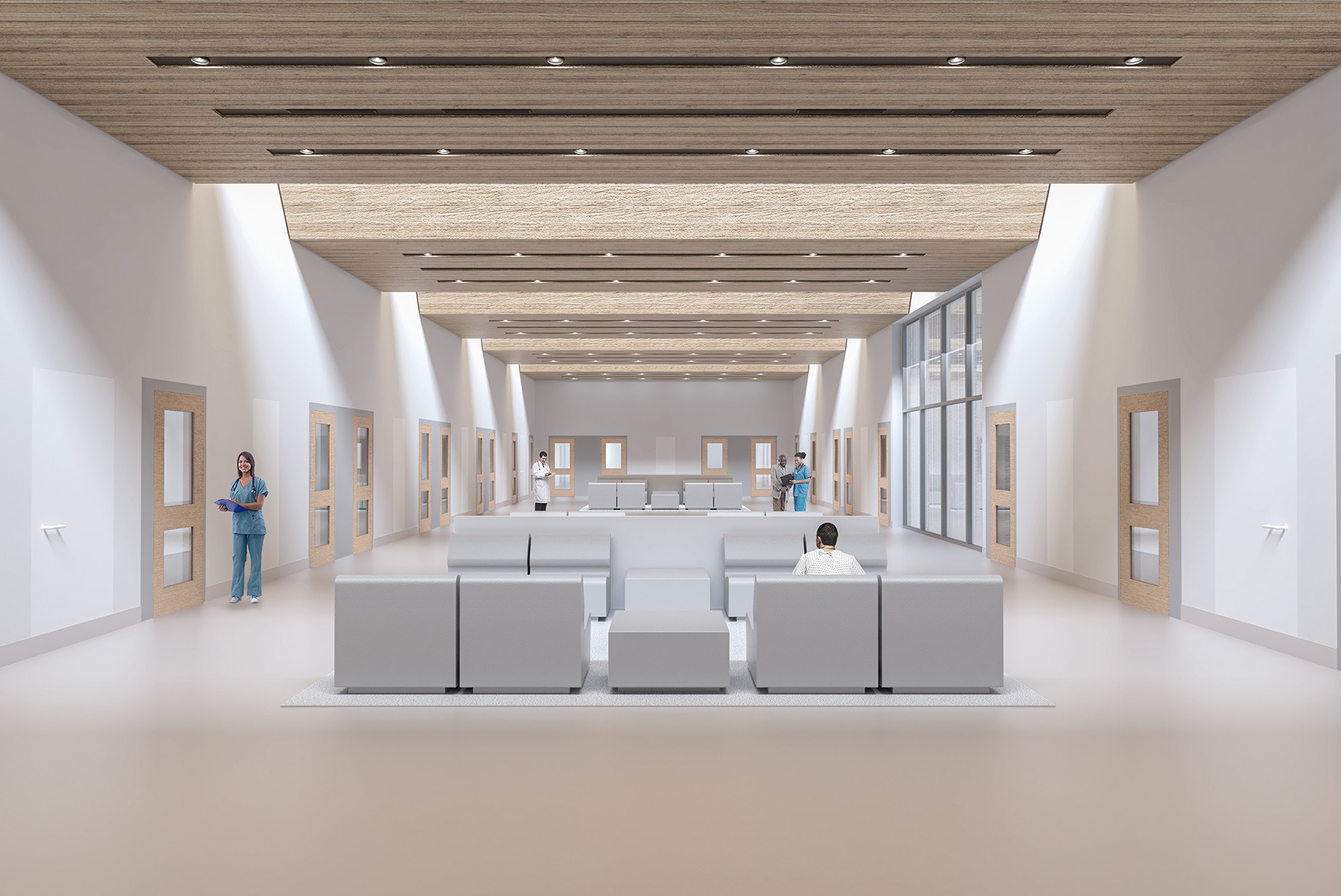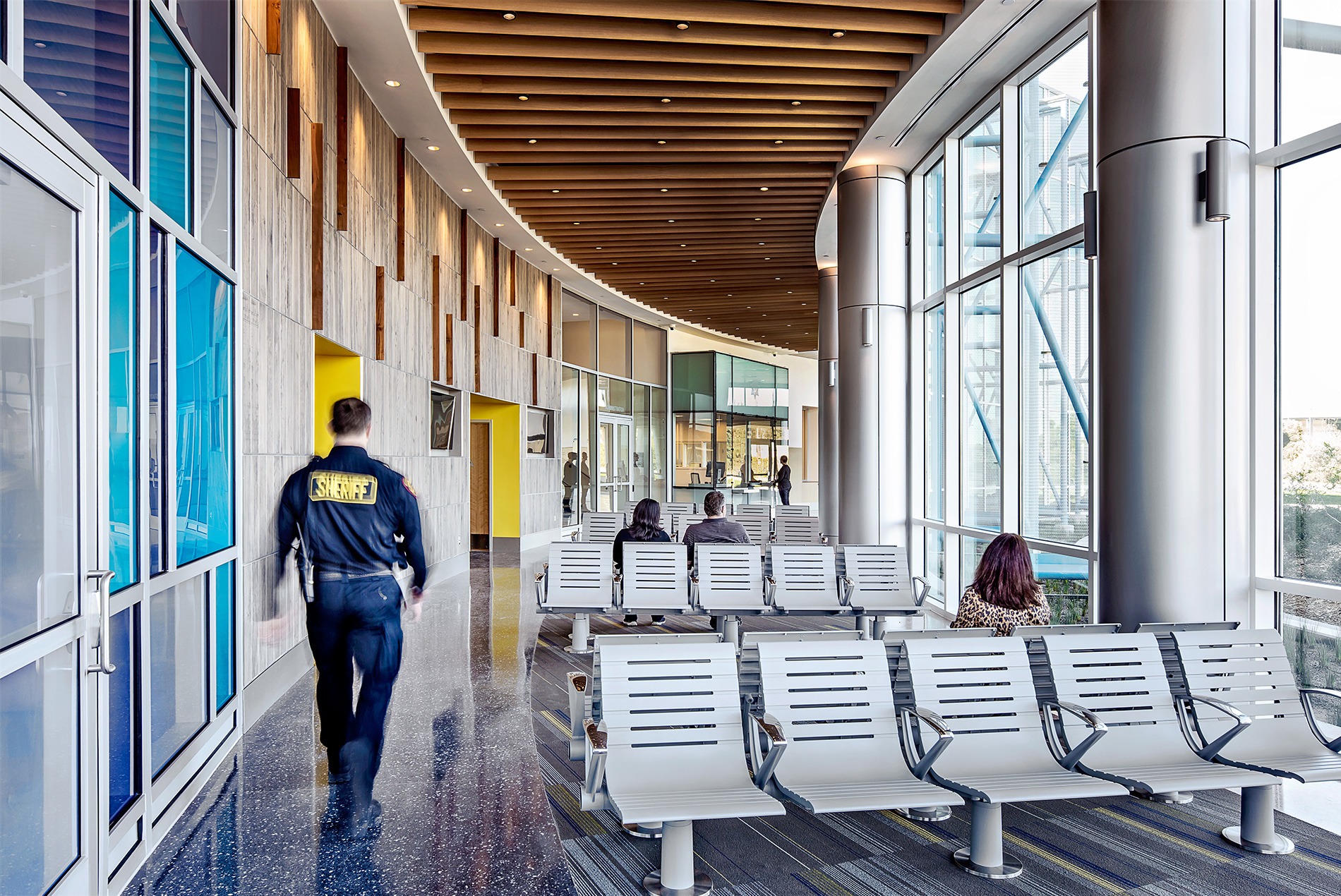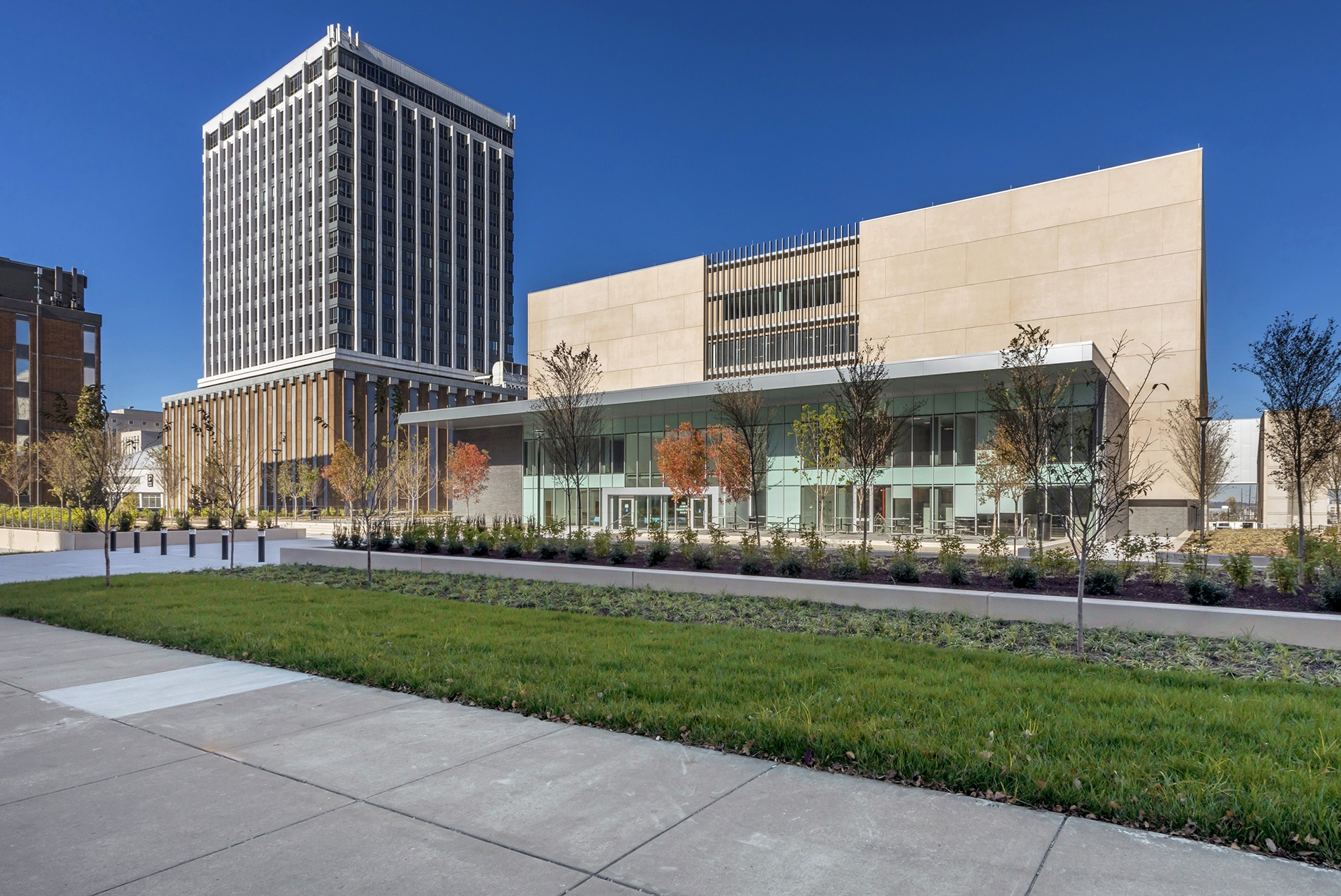To slow the spread of COVID-19 in environments where social distancing is virtually impossible and many are in poor health, jails and prisons are doing health screenings, suspending visitations, releasing people early and declining to incarcerate some arrestees who don’t pose a risk to public safety. How can the designers of these buildings help reduce disease transmission? And what will the post-COVID-19 environment look like for jails and prisons?
We asked three HOK experts: Jeff Goodale, global director of the firm’s Justice group; Shiva Mendez, senior medical planner in San Francisco; and Timothy Smith, senior security and electrical systems specialist in Dallas, to address these questions. Here’s an edited version of their conversation.
Do you envision broad changes in the approach to designing jails and prisons?
Jeff: There could be fewer people incarcerated—more treatment and less containment. We already have been designing more diversion facilities where people with mental health issues can receive outpatient treatment instead of being incarcerated. We recently designed a new inpatient mental health and medical correctional facility (below) for 200 men and women for the Illinois Department of Corrections in Joliet. Jail diversion programs and facilities could become even more important as clients look to alleviate overcrowding.

How will this pandemic accelerate the use of video technology?
Shiva: The shelter-in-place mandate and sudden disconnection from both legal and family visitation have isolated inmates. Video technology can help keep those lines of communication open. Yet many older facilities don’t have the bandwidth and equipment needed to quickly ramp up video visits and legal consults.
With prisons often located in remote areas, where they don’t have immediate access to all types of medical specialists, telemedicine is already integral to the justice healthcare system. These telemedicine programs could be expanded in the future.
Jeff: Inmates at the new Indianapolis-Marion County Community Justice Center have access to video visits. There are 15 video visit booths at the actual facility. Family members can go to video visitation access points in churches, schools and other community buildings to connect with the inmates via video from these locations. Though in-person visits will always be important, this ability to connect remotely eases the burden on families who don’t need to come the facility to visit their loved ones. And it reduces the number of parking spaces needed at a facility.
Video also connects inmates to courtrooms and keeps cases moving through the system. Judges who want to do a status hearing with an inmate can dial from their chamber to that individual’s housing unit. The system even allows the attorneys to participate remotely.
Shiva: A flip side of the growing use of video technology is that the minimal privacy rights that incarcerated people have goes away. Officers need to monitor the video meetings for appropriateness.
Jeff: The key for designers of new justice facilities will be to focus on providing a robust, flexible technology infrastructure. We want our clients to be able to plug-and-play as new technologies come along in the years ahead.
Timothy: In the future, as we see technology budgets expand, architects will work in a more integrated way with IT groups at these institutions. Getting IT teams to the table and involved earlier in the design process will lead to better long-term solutions contributing to the humane treatment and rehabilitation of inmates.
How will inmate screening procedures need to change to prevent the spread of communicable diseases?
Jeff: Upfront screening to assess the physical and mental health of people during intake will be even more imperative to our efforts to keep everyone safe. More people could then be diverted to other facilities rather than being incarcerated. Designers could also provide expanded clinical space in intake areas for these screenings.
Shiva: At the entry screening they can do an A1C blood test and check people’s body temperature and weight to acquire baseline health data. Telemedicine can speed up those initial assessments, which only require a basic level of medical training. Clinicians and staff can then classify people based on health risk and isolate those who are infected or immunocompromised.

How can institutions best manage and separate the healthy inmates from those who are sick or immunocompromised?
Shiva: Many of the devices that people wear for managing chronic diseases can be used to track fevers, blood pressure and blood sugar. But these solutions are obviously not 100 percent reliable. With COVID-19, there are asymptomatic carriers.
Then you have the inmates who are working in the kitchen, in environmental service jobs or outside the facility as part of crews fighting forest fires. As they move from place to place as part of their work details, these people can be infection vectors that put the vulnerable population of a facility at risk. But these are programs that are important for helping to reduce recidivism.
Jeff: We are already seeing sonar-based tracking technology used in some detention centers. Inmates and staff wear wristbands that allow them to be accounted for and monitored.
Will there be more interest in negative air pressure spaces?
Jeff: Many facilities already use negative pressure rooms to prevent harmful air particles from leaving isolated spaces. COVID-19 will bring that topic to the forefront.
Shiva: Negative pressure is helpful in contained spaces like waiting rooms and intake booking areas, before people have had their health screenings. In those areas, exhausting all the air to the outside is a best practice for controlling communicable diseases. But negative air pressure is geared toward controlling respiratory conditions and airborne diseases. Diseases like COVID-19, norovirus, Ebola, C. diff and MRSA are also carried by physical contact, which isn’t helped by negative air pressure.
What are some ideas for infection control?
Shiva: Practices include using gloves, specifying easy to clean surfaces, doing deep ultraviolet (UV) disinfection and ensuring that everyone has easy access to sinks for handwashing. Many areas of jails and prisons can be hosed down and easily washed. But there are still the issues of having so many people in close proximity, a lack of clean clothes and poor personal hygiene habits.
Jeff: One step we’ve taken to protect inmates in a new facility in Joliet is specifying toilets with lids, which is much more hygienic. There are other small things designers can do like using Prime Coat seamless shower systems that eliminate joints that bacteria love to live in and that have antimicrobial additives.
Jeff: We know that the surfaces of copper and its alloys are antimicrobial, so designers could explore using these materials to reduce infection rates.
